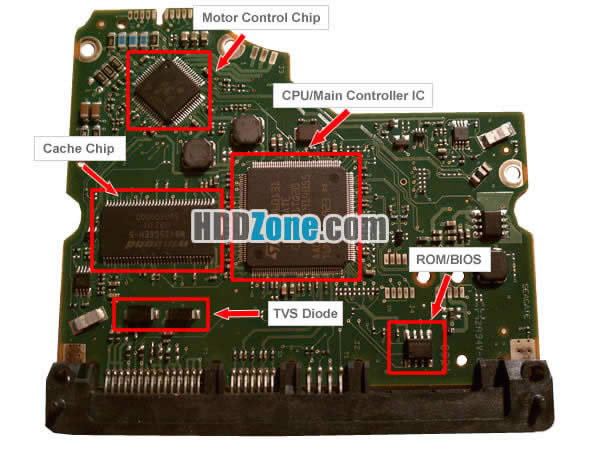The hard drive is an essential component of any computer system. It is responsible for storing all of the data that you need to access and use on a daily basis. But have you ever wondered what role the hard drive PCB plays in data storage?
Firstly, let's define what a PCB is. A PCB, or printed circuit board, is a board made of insulating material that is used to connect electronic components together. In the case of a hard drive, the PCB is the green board that is attached to the bottom of the drive.

The hard drive PCB plays a crucial role in data storage because it controls the flow of data to and from the hard drive. It acts as the interface between the hard drive and the computer's motherboard, allowing the computer to communicate with the hard drive and access the data stored on it.
The PCB also contains important firmware that controls the operation of the hard drive. This firmware (Usually stored in the BIOS chip or the main controller chip) includes information about the drive's geometry, as well as algorithms for error correction and data recovery. Without this firmware, the hard drive would not function properly and could potentially lose data.
In addition to its role in data storage, the hard drive PCB also contains other important components such as the motor control circuitry and power supply components. These components are responsible for spinning the hard drive platters and providing power to the drive.
In conclusion, the hard drive PCB plays a critical role in data storage by controlling the flow of data to and from the hard drive, providing firmware for proper operation, and containing important components for powering and spinning the drive. Understanding the function of the hard drive PCB can help you appreciate the complexity of this essential computer component.




